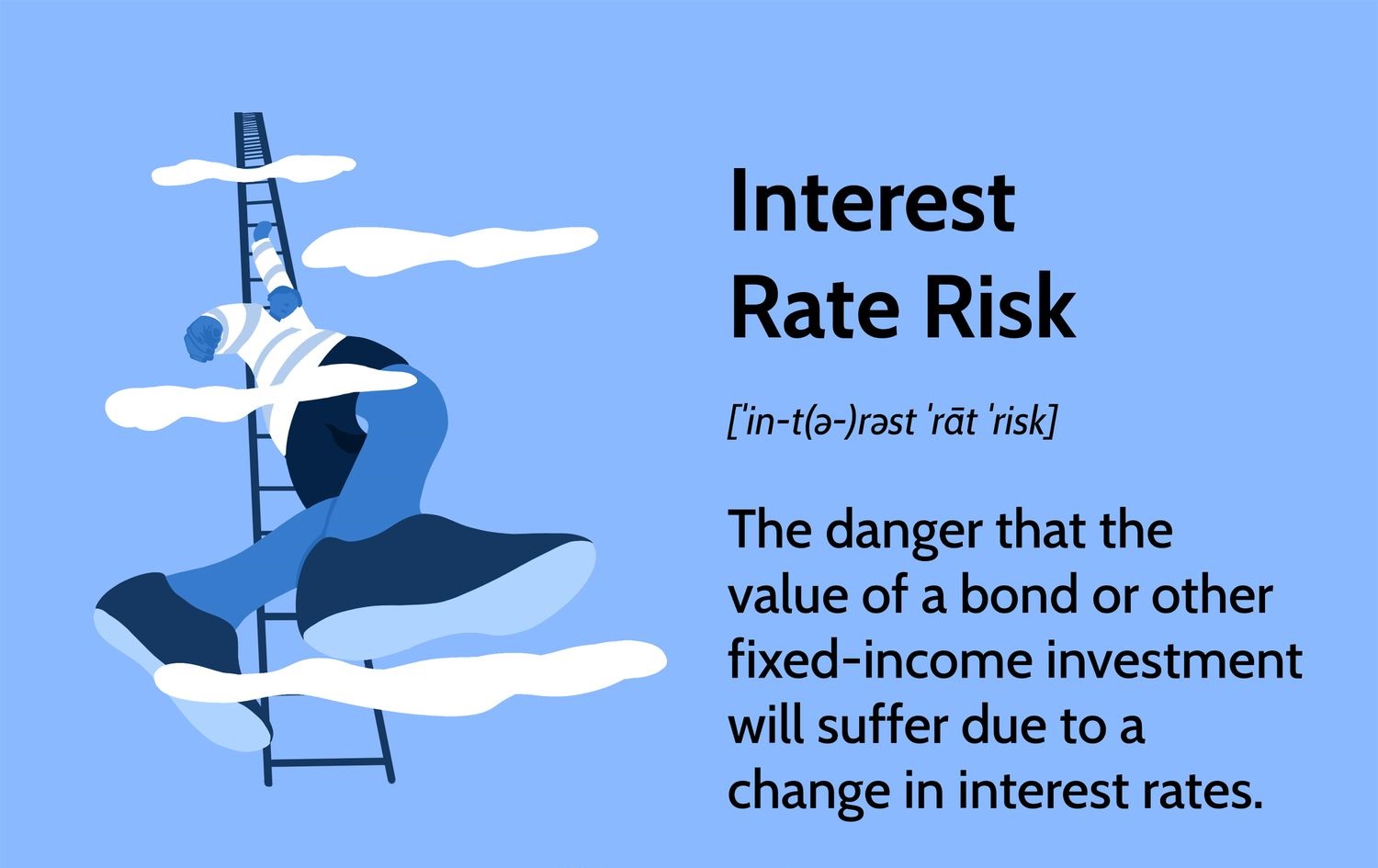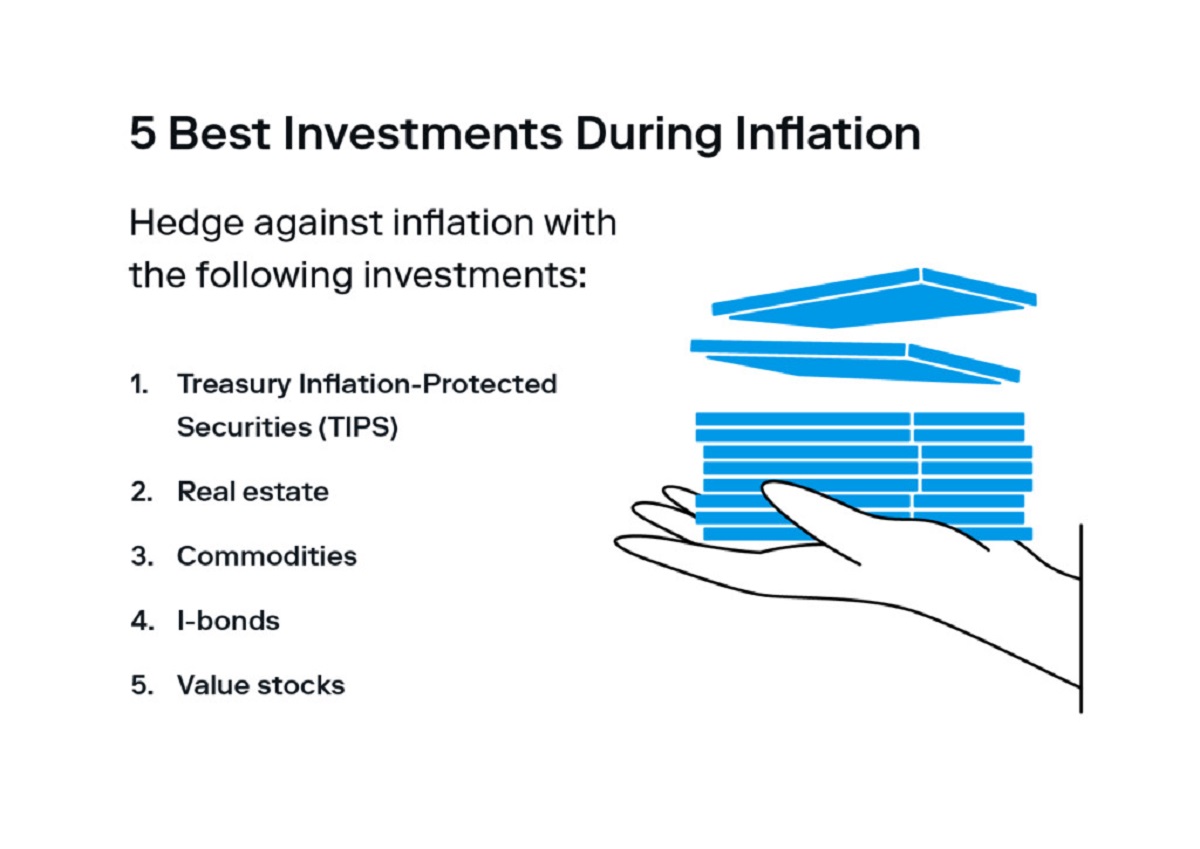Introduction
Bond investments are an essential component of a diversified investment portfolio. When considering investment options, it is important to understand what bond investments are and how they can contribute to your overall financial strategy. In this article, we will explore the basics of bond investments, including the types of bonds available, how they work, their benefits, risks, and factors to consider before investing. We will also provide guidance on how to start investing in bonds.
A bond is essentially a loan made by an investor to a borrower, typically a government or a corporation. When you invest in a bond, you are lending your money to the issuer in exchange for regular interest payments, also known as coupon payments, and the return of the principal amount at maturity.
Bond investments are favored by investors for several reasons. Firstly, bonds provide a relatively stable and predictable stream of income through periodic interest payments, making them an attractive option for income-oriented investors. Additionally, bonds are considered less volatile compared to other investment instruments, such as stocks, which makes them suitable for conservative investors looking for capital preservation. Furthermore, bonds offer diversification benefits because they often have a low correlation with equity markets, providing a hedge against market downturns.
However, like any investment, bond investments come with their own set of risks. Interest rate risk is one of the primary risks associated with bonds. When interest rates rise, bond prices tend to fall, and vice versa. This means that if you need to sell your bonds before maturity, you may incur a loss if interest rates have increased since you purchased them. Credit risk is another consideration, as there is always a chance that the issuer may default on its payment obligations.
Before investing in bonds, it is important to consider several factors. These include assessing your risk tolerance, understanding the creditworthiness of the issuer, evaluating the bond’s potential for capital appreciation, and matching your investment objectives with the appropriate bond type.
If you are new to bond investing, getting started can seem overwhelming. However, it is a straightforward process. You can invest in bonds through various channels, such as purchasing them directly from the issuer, buying them on the secondary market, or investing in bond mutual funds or exchange-traded funds (ETFs).
In the following sections, we will delve deeper into the different types of bonds, their mechanics, benefits, risks, and the factors to consider when choosing bond investments. By the end of this article, you will have a better understanding of bond investments and be better equipped to make informed investment decisions in this asset class.
What are Bond Investments?
Bond investments are a form of fixed income securities where an investor loans money to an entity, such as a government or corporation, in exchange for regular interest payments and the return of the principal amount at maturity. Bonds are essentially debt instruments that represent an IOU between the issuer and the investor.
The issuer of the bond, whether it is a government or a corporation, borrows money from investors to finance their operations or fund specific projects. In return, the bond issuer promises to pay the investor interest at regular intervals, typically semiannually or annually, and repay the principal amount when the bond reaches its maturity date.
Bonds come in various types, each with different characteristics and risk profiles. Some common types of bonds include government bonds, municipal bonds, corporate bonds, and treasury bonds. Government bonds are issued by national governments and are generally considered low-risk due to the backing of the government’s ability to tax and print money. Municipal bonds are issued by state and local governments to fund public projects such as schools and hospitals. Corporate bonds, on the other hand, are issued by corporations to raise capital for various purposes, such as expanding operations or refinancing existing debt. Lastly, treasury bonds are issued by national governments and are backed by the full faith and credit of the government.
Bond investments offer several advantages to investors. One key benefit is the fixed income stream provided by regular interest payments, which can be particularly attractive for individuals seeking stable income. This feature makes bonds especially popular among retirees or those with a low-risk tolerance. Additionally, bond investments provide diversification benefits to a portfolio. Since bonds tend to have a lower correlation with stocks, they can help reduce the overall volatility of a portfolio and provide a buffer against market fluctuations. Furthermore, bonds can serve as a hedge against inflation, as some bonds are designed to adjust their interest rates in response to changes in the inflation rate.
However, it is important to consider risks associated with bond investments. Interest rate risk is a primary concern, as bond prices are inversely related to interest rates. When interest rates rise, bond prices tend to fall, resulting in potential capital losses if a bond needs to be sold before maturity. Credit risk is another consideration, as there is always a chance of default by the bond issuer. Investors need to assess the creditworthiness of the issuer before investing in their bonds. Other risks include liquidity risk, call risk, and inflation risk, which can impact the value and performance of bond investments.
Overall, bond investments provide a stable income stream, diversification, and potential protection against inflation. However, it is crucial to carefully evaluate the risks and rewards of specific bond investments and align them with your investment goals and risk tolerance.
Types of Bonds
When considering bond investments, it is important to understand the different types of bonds available. Each type of bond has its own characteristics, risk profiles, and potential returns. Here are some common types of bonds:
- Government Bonds: These are issued by governments at the national, state, or local level. Government bonds are considered low-risk because they are backed by the government’s ability to tax and print money. They are often used to finance public projects and fund government operations. Examples include U.S. Treasury bonds, UK gilts, and German bunds.
- Municipal Bonds: Also known as munis, municipal bonds are issued by state and local governments to fund public infrastructure projects, such as schools, roads, and hospitals. The interest earned from municipal bonds is typically tax-exempt at the federal level, making them attractive to investors in higher tax brackets. However, it is essential to review the tax implications at the state and local level. Municipal bonds can be further classified into general obligation bonds and revenue bonds.
- Corporate Bonds: These are issued by corporations to raise capital for various purposes, such as expansion plans, acquisitions, or debt refinancing. Corporate bonds offer higher yields compared to government and municipal bonds, but they also come with higher risk. The creditworthiness of the issuing company, as determined by credit rating agencies, is an important consideration when investing in corporate bonds.
- High-Yield Bonds: Also known as junk bonds, high-yield bonds are issued by companies with lower credit ratings. These bonds offer higher yields to compensate for the increased risk of default. High-yield bonds can provide attractive returns for investors willing to take on greater risk, but it’s important to carefully assess the creditworthiness of the issuer.
- Convertible Bonds: Convertible bonds are a hybrid form of debt and equity. These bonds can be converted into a predetermined number of common stock shares at the option of the bondholder. Convertible bonds offer the opportunity for capital appreciation if the issuer’s stock price rises, while also providing the security of fixed interest payments.
- Foreign Bonds: These bonds are issued by foreign governments or corporations in a currency other than the investor’s home currency. Foreign bonds can provide diversification benefits, but they also expose investors to currency exchange rate fluctuations. Investors should carefully consider the economic and political risks associated with investing in foreign bonds.
These are just a few examples of the various types of bonds available in the market. Each type of bond has its own risk and return characteristics, and it’s important to assess your investment objectives and risk tolerance before choosing which type of bond investment is suitable for you.
How Do Bond Investments Work?
Bond investments function by allowing investors to lend money to bond issuers in exchange for periodic interest payments and the return of the principal amount at maturity. Understanding how bond investments work is essential for investors looking to incorporate bonds into their investment portfolios. Here’s a breakdown of the key aspects of bond investments:
Bond Issuance: When an entity, such as a government or corporation, needs to raise capital, it can issue bonds as a form of debt. The issuer sets the terms of the bond, including the coupon rate (interest rate), maturity date, and the face value (principal amount).
Bond Purchase: Investors can purchase bonds directly from the issuer during the primary market issuance. Alternatively, they can buy bonds on the secondary market, where previously issued bonds are bought and sold between investors.
Coupon Payments: Bonds typically pay interest to investors in the form of regular coupon payments. The coupon rate is stated as a percentage of the bond’s face value and determines the amount of interest the issuer will pay to the investor. For example, if a bond has a face value of $1,000 and a coupon rate of 5%, the investor will receive $50 in annual coupon payments.
Maturity Date: The maturity date is the date on which the bond reaches the end of its term and the issuer is obligated to repay the face value of the bond to the investor. Bond maturities can range from a few months to several decades.
Interest Rate Risk: Bond prices are influenced by changes in interest rates. When market interest rates rise, the prices of existing bonds generally decrease, and vice versa. This means that if an investor sells a bond before its maturity date, they may incur a capital gain or loss depending on the prevailing interest rates.
Credit Risk: Bond investments are subject to credit risk, which refers to the possibility of the bond issuer defaulting on its interest or principal payments. Investors should evaluate the creditworthiness of the issuer by considering credit ratings assigned by reputable credit rating agencies.
Yield to Maturity: The yield to maturity (YTM) is the total return an investor can expect to receive when holding the bond until its maturity date. It takes into account the bond’s purchase price, coupon payments, and the face value of the bond at maturity. YTM provides a way to compare the potential returns of different bonds.
Bond Pricing: Bond prices are influenced by several factors, including interest rates, credit quality, and bond supply and demand dynamics. Bonds may trade at a premium (above face value), at par (at face value), or at a discount (below face value) depending on these factors.
Callable Bonds: Some bonds have a call feature that allows the issuer to retire the bond before its maturity date. Callable bonds give the issuer the right, but not the obligation, to redeem the bonds early. This means that if a bond is called, the investor may receive the face value of the bond and miss out on future coupon payments.
By understanding these fundamental aspects of bond investments, investors can make informed decisions about the bonds they choose to invest in and manage their bond portfolios effectively.
Benefits of Bond Investments
Bond investments offer various benefits to investors, making them a valuable addition to a balanced investment portfolio. Here are some key advantages of investing in bonds:
1. Stable Income: Bonds provide a stable and predictable income stream through regular interest payments, also known as coupon payments. The fixed interest payments can be particularly attractive for income-oriented investors, such as retirees, who rely on regular cash flow.
2. Capital Preservation: Bonds are generally considered less volatile compared to other investment options, such as stocks. They have a fixed maturity date and promise the return of the principal amount at maturity, providing investors with a level of capital preservation. This makes bonds suitable for conservative investors who prioritize protecting their investment capital.
3. Diversification: Bonds offer diversification benefits within an investment portfolio. Bonds often have a low correlation with equity markets, meaning their performance may be influenced by different factors. By including bonds in a portfolio, investors can reduce the overall risk and volatility, as bond prices tend to be less affected by market fluctuations compared to stocks.
4. Regular Cash Flow: Coupon payments from bonds can provide investors with a reliable source of income. This can be important for meeting ongoing financial commitments or funding living expenses. By investing in bonds with staggered maturities, investors can create a stream of income that matches their specific cash flow needs.
5. Inflation Protection: Inflation erodes the purchasing power of money over time. Certain types of bonds, such as Treasury Inflation-Protected Securities (TIPS), are specifically designed to provide protection against inflation. These bonds adjust their interest payments and principal values based on changes in the consumer price index (CPI), ensuring that investors maintain the purchasing power of their investment even in inflationary environments.
6. Accessible for Various Budgets: Bonds are available in a wide range of denominations, making them accessible to investors with different budget sizes. Whether an investor wants to invest a few hundred dollars or millions, there are bonds available to suit their investment capacity.
7. Tailored Risk Profiles: Bonds offer investors the flexibility to choose bonds that align with their risk tolerance. For those seeking lower risk, government bonds or highly-rated corporate bonds may be suitable. On the other hand, investors willing to take on increased risk for higher potential returns can explore high-yield bonds or emerging market bonds.
8. Potential Tax Advantages: Some types of bonds, such as municipal bonds, offer tax advantages. The interest income from municipal bonds is often exempt from federal income tax and, in some cases, from state and local taxes as well. This can enhance the after-tax return for investors, especially in higher tax brackets.
By incorporating bonds into an investment portfolio, investors can benefit from stable income, capital preservation, diversification, and potential tax advantages. It is important to consider individual investment goals, risk tolerance, and time horizon when selecting specific bonds to ensure they align with one’s financial objectives.
Risks of Bond Investments
While bond investments offer several advantages, it is important for investors to be aware of the risks associated with this asset class. Understanding and managing these risks is crucial for making informed investment decisions. Here are some key risks to consider when investing in bonds:
1. Interest Rate Risk: Bond prices are sensitive to changes in interest rates. When market interest rates rise, bond prices tend to fall, and vice versa. This means that if an investor needs to sell a bond before its maturity date, they may incur a capital loss if interest rates have increased since the bond was purchased. Longer-term bonds typically have higher interest rate risk compared to shorter-term bonds.
2. Credit Risk: Credit risk refers to the possibility of the bond issuer defaulting on its interest or principal payments. Bonds issued by entities with lower creditworthiness or lower credit ratings carry a higher credit risk. It is crucial for investors to assess the financial strength and creditworthiness of the bond issuer before investing. Credit rating agencies provide assessments of issuers’ creditworthiness, serving as a guide for investors.
3. Liquidity Risk: Liquidity risk pertains to the ease with which a bond can be bought or sold in the market. Some bonds may have a low trading volume, which can make it challenging to find buyers or sellers and potentially affect the bond’s price. In extreme situations, certain bonds may become illiquid, meaning investors may struggle to sell them at the desired price or within a reasonable timeframe.
4. Call Risk: Callable bonds have a call feature that allows the issuer to redeem the bonds before their maturity date. This represents a risk to investors because if the bonds are called, investors may lose out on future interest payments or potential capital appreciation if the bond’s market value exceeds its call price. It is important to assess the potential for call risk when investing in callable bonds.
5. Inflation Risk: Inflation risk refers to the potential erosion of purchasing power due to rising inflation. If the yield on a bond does not keep pace with inflation, the real return on the investment may be negative. While Treasury Inflation-Protected Securities (TIPS) provide protection against inflation, other types of bonds may not offer the same level of inflation protection.
6. Reinvestment Risk: Reinvestment risk is relevant to investors who rely on the income generated from coupon payments. When interest rates decrease, investors may face challenges finding new investments with the same level of income. This can result in potentially lower future income if the reinvestment of coupon payments is at lower yields.
7. Currency Risk: If an investor holds bonds denominated in a foreign currency, they are exposed to currency risk. Changes in exchange rates can impact the value of the investment and the investor’s overall return. Fluctuations in currency values can either magnify or reduce investment returns.
8. Regulatory and Policy Risk: Government regulations and changes in economic policy can impact bond investments. For example, changes in tax laws or regulations affecting specific industries or sectors can influence the value of bonds. Investors need to stay informed about regulatory developments that may affect their bond investments.
It’s important for investors to carefully consider these risks, assess their risk tolerance, and diversify their bond holdings to manage the potential downsides. Understanding the risks associated with bond investments can help investors make informed decisions and align their strategies with their financial goals.
Factors to Consider when Choosing Bond Investments
Choosing the right bond investments requires careful consideration of various factors. These factors can help investors align their investment objectives, risk tolerance, and financial circumstances with the most suitable bonds. Here are key factors to consider when selecting bond investments:
1. Investment Goals: Clarify your investment goals and objectives. Are you investing for income, capital appreciation, or a combination of both? Understanding your goals will help guide your bond investment strategy.
2. Risk Tolerance: Assess your risk tolerance, which is your ability and willingness to withstand fluctuations in the value of your investments. Bonds have different risk profiles, and understanding your risk tolerance will help determine the types of bonds that are most appropriate for you.
3. Time Horizon: Consider your investment time horizon, which is the expected length of time you plan to hold the bonds. Longer-term bonds may provide higher yields but are more exposed to interest rate risk. Shorter-term bonds tend to have lower yields but offer more liquidity and lower interest rate risk.
4. Credit Quality: Evaluate the credit quality of the bond issuer. Bond issuers are assigned credit ratings by reputable rating agencies, such as Standard & Poor’s, Moody’s, and Fitch. Higher-rated bonds typically have lower credit risk but may offer lower yields. Lower-rated bonds carry higher credit risk but may offer higher yields to compensate for the increased risk.
5. Interest Rate Environment: Consider the prevailing interest rate environment and its potential impact on bond prices and yields. When interest rates are expected to rise, choosing shorter-term bonds or floating-rate bonds may be more appropriate. Conversely, when interest rates are expected to decrease, longer-term bonds may offer higher yields.
6. Tax Considerations: Take into account the tax implications of bond investments. Different types of bonds may have differing tax treatments. For example, municipal bonds often offer tax advantages at the federal, state, or local levels. Consult with a tax advisor to understand the tax implications of different bond investments based on your specific tax situation.
7. Diversification: Aim for a diversified bond portfolio to spread risk across different types of bonds, sectors, and maturities. Diversification can help mitigate the impact of poor performance by one bond on the overall portfolio. Allocating investments across various bonds can provide a balance between income generation and potential capital appreciation.
8. Yield and Coupon Payments: Consider the yield and coupon payments offered by the bonds. Yield represents the overall return an investor can expect from holding the bond until maturity. Compare the yields of different bonds to determine their relative attractiveness. Additionally, assess the stability and regularity of coupon payments to ensure they meet your income needs.
9. Market Liquidity: Evaluate the liquidity of the bond market, particularly for less-traded bonds. High liquidity provides ease of buying or selling bonds without significantly impacting their prices. Bonds with higher liquidity allow for greater flexibility in managing your portfolio or taking advantage of investment opportunities.
10. Reinvestment Options: Consider the reinvestment options available for coupon payments or bond redemptions. Evaluate the potential for reinvesting cash flows at attractive yields in the current market environment. Reinvestment options can impact future income and overall returns.
By carefully considering these factors and conducting thorough research, investors can make well-informed decisions when choosing bond investments. It is important to periodically review and reassess these factors to ensure that bond investments continue to align with your financial goals, risk tolerance, and the prevailing market conditions.
How to Start Investing in Bonds
Investing in bonds can be a rewarding endeavor that offers stable income and portfolio diversification. If you are interested in starting your bond investment journey, here are some steps to help you get started:
1. Educate Yourself: Begin by educating yourself about the basics of bond investing. Understand how bonds work, the different types of bonds available, and the associated risks and benefits. Knowledge about bond terminology, such as yield, coupon rate, and maturity, will provide a solid foundation for making informed investment decisions.
2. Set Investment Goals: Determine your investment goals and objectives. Are you investing for income, capital appreciation, or to achieve a specific financial milestone? Clearly defining your goals will guide your bond investment strategy and help you select the most suitable bonds.
3. Assess Risk Tolerance: Evaluate your risk tolerance to determine how comfortable you are with potential fluctuations in the value of your bond investments. This will help you determine the types of bonds that align with your risk tolerance. Remember that higher potential returns often come with higher risks.
4. Determine Investment Amount: Decide how much capital you are willing to invest in bonds. Assess your financial situation, liquidity needs, and overall investment portfolio to determine the appropriate allocation of funds to bond investments. Consider diversifying your investments across different bonds to spread risk.
5. Research Bonds: Conduct thorough research on various bonds that align with your investment goals. Consider factors such as credit quality, maturity dates, coupon rates, and liquidity. Research may involve analyzing issuer financials, credit ratings, and market trends. Consult reputable sources, financial advisors, or online platforms for bond research.
6. Select Bond Brokers or Platforms: Once you have chosen the bonds you wish to invest in, select a broker or online platform to facilitate your bond purchases. Take into consideration factors such as transaction costs, available bond offerings, research tools, and customer support. Ensure that the broker or platform offers reliable execution and secure account access.
7. Build a Diversified Portfolio: Aim to build a diversified bond portfolio by investing in a range of bonds across different issuers, sectors, and maturities. Diversification helps mitigate the impact of poor performance from a single bond or issuer on the overall portfolio. Evaluate the specific risk-return profile of each bond and ensure that the portfolio aligns with your risk tolerance and investment objectives.
8. Monitor and Rebalance: Regularly monitor your bond portfolio and stay updated on market and economic trends that may impact your investments. Review and rebalance your portfolio periodically to ensure it remains aligned with your investment goals. Consider adjusting your bond investments as market conditions or your financial situation changes.
9. Seek Professional Guidance: If you are new to bond investing or are unsure about investment decisions, consider seeking guidance from a financial advisor or investment professional. They can provide personalized advice based on your financial goals, risk tolerance, and market conditions.
10. Stay Informed: Continuously educate yourself about the bond market and stay informed about economic and policy developments. Read financial news, follow market trends, and understand how global events can impact bond prices and yields. Being well-informed will empower you to make informed investment decisions.
Starting to invest in bonds requires careful planning, research, and understanding of your financial goals and risk tolerance. By following these steps, you can begin your bond investment journey with confidence, and over time, build a bond portfolio that aligns with your financial objectives.
Conclusion
Bond investments can be a valuable addition to an investment portfolio, offering stable income, capital preservation, and diversification benefits. By understanding the basics of bond investments, the various types of bonds available, and the associated risks and rewards, investors can make informed decisions and align their investments with their financial goals.
When choosing bond investments, it is crucial to evaluate factors such as investment goals, risk tolerance, time horizon, credit quality, and market conditions. This assessment helps investors identify the most suitable bonds that align with their objectives and risk preferences.
While bonds provide stable income and relative safety, they are not without risks. Interest rate risk, credit risk, liquidity risk, and inflation risk are some of the important considerations. Being aware of these risks allows investors to develop strategies to mitigate potential downsides.
Starting to invest in bonds requires education, research, and careful planning. It is essential to stay informed about market trends, monitor your bond investments regularly, and periodically reassess your portfolio to ensure it aligns with your goals and risk tolerance.
Seeking guidance from financial advisors or investment professionals can provide valuable insights and help navigate the complexities of bond investing, especially for those new to the asset class. Their expertise can assist in selecting suitable bonds and developing a well-diversified portfolio.
Remember, bond investments should be part of a comprehensive financial plan that takes into account an investor’s entire financial picture, including their unique circumstances, goals, and tolerance for risk.
By carefully considering the factors discussed in this article and by conducting thorough research, investors can embark on a successful bond investment journey and potentially reap the benefits of stable income, capital preservation, and portfolio diversification.

























